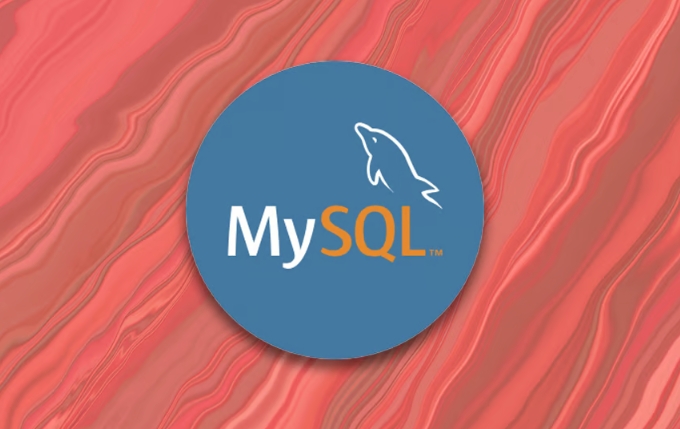Implementing effective indexing strategies for large MySQL tables
Jul 05, 2025 am 02:46 AMAn effective indexing strategy needs to be combined with query patterns, data distribution and business needs, rather than blindly added. 1. Understand common query paths, prioritize the establishment of joint indexes for multi-field combination, sorting or grouping operations, and pay attention to index order; 2. Avoid excessive indexing to reduce write overhead, clean redundant indexes regularly, and view unused indexes through the system view; 3. Use overlay indexes to make the index itself contain the fields required for query, reduce table back operations, and improve reading efficiency; 4. Consider partitioning and indexing for super-large tables, select partition keys that are consistent with the query conditions, and establish a reasonable index for each partition, but the complexity and performance improvements are required.

Indexing is a key tool to improve MySQL query performance, but for large tables, blindly adding indexes may slow down writing and waste storage space. A truly effective indexing strategy is not the more, the better, but should be designed in combination with query patterns, data distribution and business needs.

1. Understand the query mode and create indexes as needed
Don't add indexes when you see the WHERE clause. You need to figure out what the commonly used query path looks like. for example:

- Which fields often appear in WHERE conditions?
- Is there a situation where multiple fields combine query?
- Is there a sort (ORDER BY) or a grouping (GROUP BY) operation?
For example: you have an order table orders. If most queries are filtered by a combination of user_id and created_at , then a joint index (user_id, created_at) is more efficient than two single column indexes.
Note: Union indexes are in order,
(a, b)can supportWHERE a = ?andWHERE a = ? AND b = ?, but notWHERE b = ?.
2. Avoid over-index and control write overhead
Every time data is inserted, updated, or deleted, MySQL needs to update all relevant indexes synchronously. If you add seven or eight indexes to a table with tens of millions of rows, the writing speed will be significantly slower.
Suggested practices:
- Delete indexes that are no longer used, especially the "temporary" indexes left behind during the testing phase
- For fields that are frequently updated but rarely queried, try to avoid indexing
- Use
ALTER TABLE ... DROP INDEXto clean redundant indexes regularly
You can use the following statement to view unused indexes:
SELECT * FROM sys.schema_unused_indexes;
This can help you find out which indexes can actually be deleted.
3. Use overlay index to reduce back-to-table
Overwriting index means: the index itself contains all the fields required for the query, so the database does not need to search for data rows in the primary key index, saving I/O.
For example, suppose you have a query like this:
SELECT name FROM users WHERE status = 'active';
If you have an index on the status field but only include this field, then MySQL still needs to go back to the table to check the name. However, if a joint index (status, name) is established, the index can be directly hit and completed the query.
This optimization method is particularly suitable for report-type queries with more reads and less reads.
4. Consider the coordination between partition and index
When the data volume of a single table is very large (such as hundreds of millions of records), even if there is an index, it may affect the query efficiency because the index tree is too deep. You can consider using partition tables at this time.
Common partitioning methods include partitioning by time range, partitioning by hash, etc. What should be noted is:
- The partition key is best consistent with the fields in the query conditions.
- Each partition has its own index structure, so you must re-evaluate the index strategy after partitioning.
- Don't think that using partitions will definitely be fast, it also brings a certain degree of complexity.
For example, if you have a log table, add millions of new data every day, you can partition the range by log_date and add an index of (user_id, log_date) to each partition, which can not only quickly locate user behavior, but also control the partition size.
Basically that's it. Index optimization is not something that can be achieved overnight. The key is to continuously observe query performance, analyze execution plans, and regularly maintain the index structure. Not complicated but easy to ignore.
The above is the detailed content of Implementing effective indexing strategies for large MySQL tables. For more information, please follow other related articles on the PHP Chinese website!

Hot AI Tools

Undress AI Tool
Undress images for free

Undresser.AI Undress
AI-powered app for creating realistic nude photos

AI Clothes Remover
Online AI tool for removing clothes from photos.

Clothoff.io
AI clothes remover

Video Face Swap
Swap faces in any video effortlessly with our completely free AI face swap tool!

Hot Article

Hot Tools

Notepad++7.3.1
Easy-to-use and free code editor

SublimeText3 Chinese version
Chinese version, very easy to use

Zend Studio 13.0.1
Powerful PHP integrated development environment

Dreamweaver CS6
Visual web development tools

SublimeText3 Mac version
God-level code editing software (SublimeText3)

Hot Topics
 Performance optimization and horizontal expansion technology of Go framework?
Jun 03, 2024 pm 07:27 PM
Performance optimization and horizontal expansion technology of Go framework?
Jun 03, 2024 pm 07:27 PM
In order to improve the performance of Go applications, we can take the following optimization measures: Caching: Use caching to reduce the number of accesses to the underlying storage and improve performance. Concurrency: Use goroutines and channels to execute lengthy tasks in parallel. Memory Management: Manually manage memory (using the unsafe package) to further optimize performance. To scale out an application we can implement the following techniques: Horizontal Scaling (Horizontal Scaling): Deploying application instances on multiple servers or nodes. Load balancing: Use a load balancer to distribute requests to multiple application instances. Data sharding: Distribute large data sets across multiple databases or storage nodes to improve query performance and scalability.
 Nginx Performance Tuning: Optimizing for Speed and Low Latency
Apr 05, 2025 am 12:08 AM
Nginx Performance Tuning: Optimizing for Speed and Low Latency
Apr 05, 2025 am 12:08 AM
Nginx performance tuning can be achieved by adjusting the number of worker processes, connection pool size, enabling Gzip compression and HTTP/2 protocols, and using cache and load balancing. 1. Adjust the number of worker processes and connection pool size: worker_processesauto; events{worker_connections1024;}. 2. Enable Gzip compression and HTTP/2 protocol: http{gzipon;server{listen443sslhttp2;}}. 3. Use cache optimization: http{proxy_cache_path/path/to/cachelevels=1:2k
 When might a full table scan be faster than using an index in MySQL?
Apr 09, 2025 am 12:05 AM
When might a full table scan be faster than using an index in MySQL?
Apr 09, 2025 am 12:05 AM
Full table scanning may be faster in MySQL than using indexes. Specific cases include: 1) the data volume is small; 2) when the query returns a large amount of data; 3) when the index column is not highly selective; 4) when the complex query. By analyzing query plans, optimizing indexes, avoiding over-index and regularly maintaining tables, you can make the best choices in practical applications.
 The impact of exception handling on Java framework performance optimization
Jun 03, 2024 pm 06:34 PM
The impact of exception handling on Java framework performance optimization
Jun 03, 2024 pm 06:34 PM
Exception handling affects Java framework performance because when an exception occurs, execution is paused and the exception logic is processed. Tips for optimizing exception handling include: caching exception messages using specific exception types using suppressed exceptions to avoid excessive exception handling
 Apache Performance Tuning: Optimizing Speed & Efficiency
Apr 04, 2025 am 12:11 AM
Apache Performance Tuning: Optimizing Speed & Efficiency
Apr 04, 2025 am 12:11 AM
Methods to improve Apache performance include: 1. Adjust KeepAlive settings, 2. Optimize multi-process/thread parameters, 3. Use mod_deflate for compression, 4. Implement cache and load balancing, 5. Optimize logging. Through these strategies, the response speed and concurrent processing capabilities of Apache servers can be significantly improved.
 Explain different types of MySQL indexes (B-Tree, Hash, Full-text, Spatial).
Apr 02, 2025 pm 07:05 PM
Explain different types of MySQL indexes (B-Tree, Hash, Full-text, Spatial).
Apr 02, 2025 pm 07:05 PM
MySQL supports four index types: B-Tree, Hash, Full-text, and Spatial. 1.B-Tree index is suitable for equal value search, range query and sorting. 2. Hash index is suitable for equal value searches, but does not support range query and sorting. 3. Full-text index is used for full-text search and is suitable for processing large amounts of text data. 4. Spatial index is used for geospatial data query and is suitable for GIS applications.
 Performance optimization in Java microservice architecture
Jun 04, 2024 pm 12:43 PM
Performance optimization in Java microservice architecture
Jun 04, 2024 pm 12:43 PM
Performance optimization for Java microservices architecture includes the following techniques: Use JVM tuning tools to identify and adjust performance bottlenecks. Optimize the garbage collector and select and configure a GC strategy that matches your application's needs. Use a caching service such as Memcached or Redis to improve response times and reduce database load. Employ asynchronous programming to improve concurrency and responsiveness. Split microservices, breaking large monolithic applications into smaller services to improve scalability and performance.
 How does MySQL index cardinality affect query performance?
Apr 14, 2025 am 12:18 AM
How does MySQL index cardinality affect query performance?
Apr 14, 2025 am 12:18 AM
MySQL index cardinality has a significant impact on query performance: 1. High cardinality index can more effectively narrow the data range and improve query efficiency; 2. Low cardinality index may lead to full table scanning and reduce query performance; 3. In joint index, high cardinality sequences should be placed in front to optimize query.







